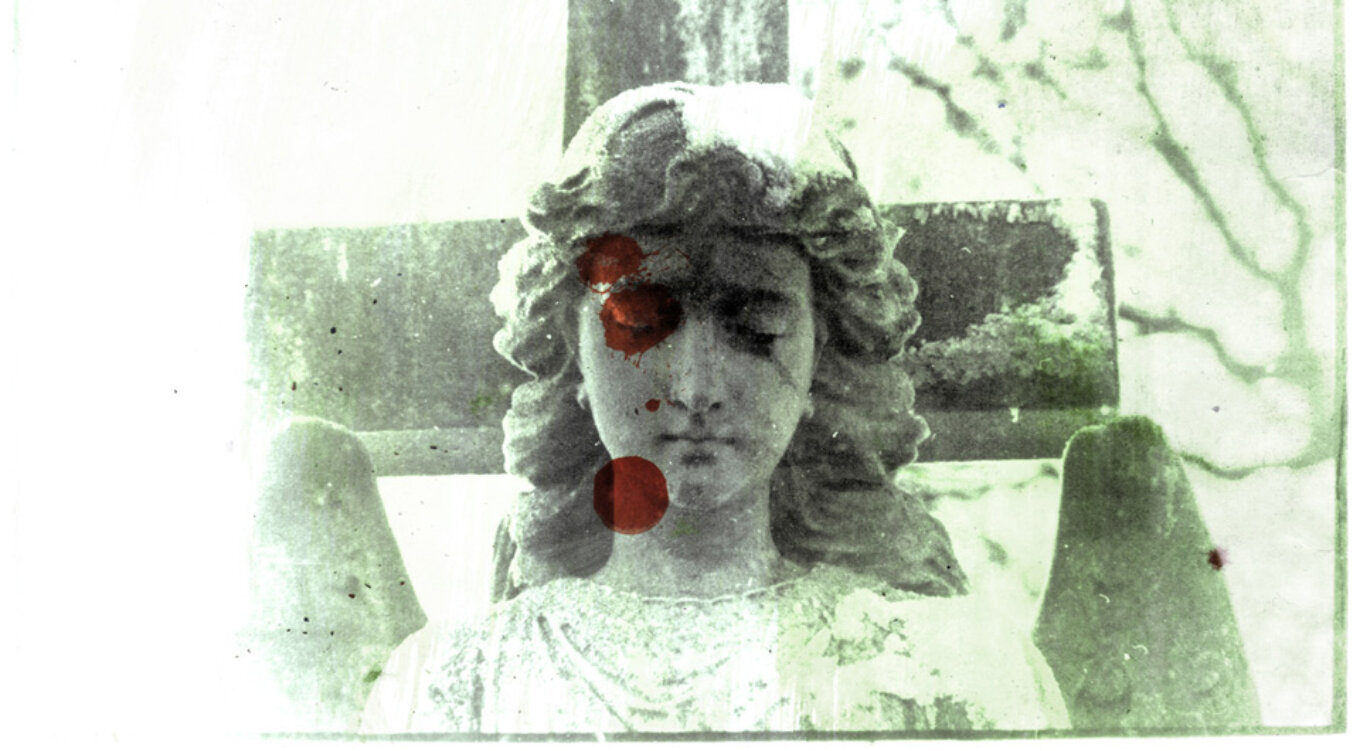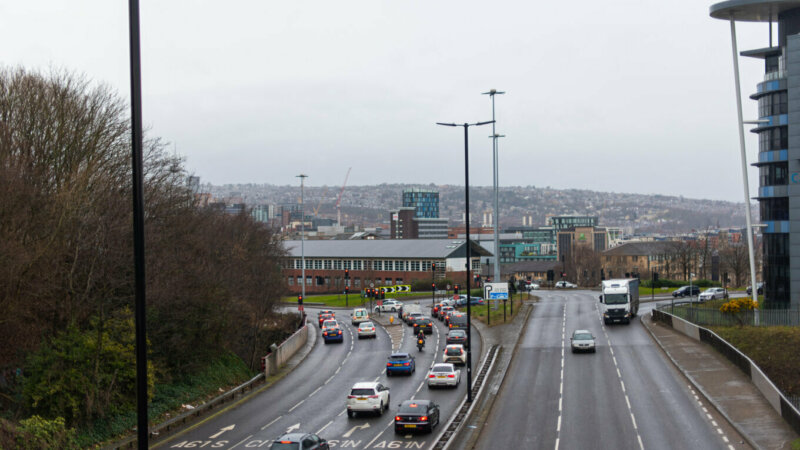Sheffield Gangs: A History of Violence
Not so long ago, Sheffield was infamous for its gang culture, a story told in J.P. Bean's excellent local history, The Sheffield Gang Wars.
The names Percy Sillitoe and George Mooney loom large in Sheffield folklore, although many people living here have never heard of these colourful characters or the turbulent period they inhabited.
They are the subject of J.P. Bean's excellent local history The Sheffield Gang Wars. For those of you who have never had the chance to read Bean's book, it tells the story of the rise and fall of the Sheffield gangs, a tale of vice, villainy and violence on the mean streets of South Yorkshire. What follows is a criminally short synopsis of the tale, so if you are sitting comfortably then I'll begin.
Sheffield was a pretty grim place in the early 20th century. Stinking and soot blackened, Orwell described it as 'the ugliest town in the world'. Much of the population was crammed into unsanitary slums, where poverty, mass unemployment and endemic gambling had for decades fostered criminality and gang culture.
In the 19th century, there had been the Gutterpercha Gang (charmingly named after a chemical used to make rubber coshes) and later the Red and White Silk Gangs, named after the silk neckerchiefs they liked to sport. However, the 1920s became the most notorious period in Sheffield's criminal history, earning it the moniker 'Little Chicago' as rival factions battled to control the Sky Edge Tossing Ring.
Not the cottaging hotspot that its name suggests, a tossing ring was an area where men gathered, often in their hundreds, to bet illegally on the game of Pitch and Toss, an elaborate version of Heads or Tails.
The Skyring, as it was then known, was positioned on a patch of wasteland on a hilltop behind what are now Parkhill flats. Its position above the city gave lookouts ample opportunity to spot incoming police raids, and this relative degree of security drew the highest spending gamblers from across the city and beyond. Controlling the proceedings and turning a healthy profit in the process were George Mooney and the Mooney Gang.
During and directly after WWI, gambling in Sheffield had boomed, eating up the wages of miners and steel workers reliably employed by the war effort. But the post war slump in production, mass unemployment and a collapsing welfare system meant less money to be gambled. The gangs' profits dried up. Mooney, wanting to hold on to the lion's share of the ring's earnings, decided to 'let go' from the gang all but a handful of his closest accomplices. Understandably a bit miffed, his former employees did what any self respecting group of ex-henchmen would do, and started a gang war.
The battle between the Mooney Gang and the Park Brigade, as the new faction came to be known, went on almost uninterrupted from 1923 until 1925, with men being slashed with razors, beaten with pokers and stabbed with bayonets, bystanders and police officers wounded and houses being lain siege to and stormed. A combination of witness intimidation and surprisingly light sentencing for those few who were successfully prosecuted meant that the efforts of the police had little effect in deterring the belligerents. The feud finally culminated in 1925 with the violent murder of William Plommer, a man who seemed to be only incidentally related to Sheffield gangs.
It seems that Plommer's crime against the Park Brigade had been to force one of their members to face, in a fair fight, a man who he had previously assaulted without provocation. In the brawl that followed, the Brigade man was knocked to the ground and as Plommer helped him to his feet he warned him that he would be punished for what he had done.
The following day a pack of men from the Park Brigade turned up on Princess Street, where Plommer lived, and paraded up and down looking for him. Finally it seems he had gone out to meet them, unarmed, and challenged them to fight him one by one. Being an armed gang, they did not take him up on his offer but did the thing that armed gangs are made for, collectively beating him up with pokers, coshes and the most feared of all weapons - a piece of lead on a string.
He was clubbed to the floor, though not before knocking out one of his attackers, and then stabbed in the stomach. Plommer managed to drag himself as far as his house, where one of his attackers beat him across the head with a child's scooter. Plommer was taken to hospital, where he died from his wounds. The attackers went to the chip shop.
Upon being found there by the police, one of the attackers admitted "I hit him on the head" but, after being warned by the officer that the situation was serious, he executed a piece of brilliant legal counter attack, stating "I did not him on the head".
In the end, it was never quite established who had struck the lethal blow. The defendants argued that although it had been them who had been beating him up, it was 'someone else' in the crowd who must have actually stabbed him, which isn't really very convincing. The murder weapon was never discovered, even though a collection of other abandoned weapons were found scattered around the scene. Two of the men involved were hanged, while the others were sentenced to hard labour.
Around 8,000 people attended Plommer's funeral at Burngreave Cemetery, showing not only commiseration for the victim, but condemnation of the violent gangs that seemed to act with impunity on the streets of Sheffield.
Reacting to public outcry and orders from the Home Office to crack down on gang violence, the Chief Constable formed the Special Duties Squad, a group of extra large, extra tough plainclothes police officers who spent the next three years copiously beating up everyone associated with the known criminal gangs, or at least being present while suspects repeatedly fell down stairs.
One of the most famous and controversial brawls took place in the very same Red House where so many of us have wobbled the night away. This went on until, so the story goes, they saw the error of their ways, gave up the thug's life and turned their noses to honest toil.
The man usually credited with forming the Special Duties Squad and bringing an end to the Sheffield gangs is Percy Sillitoe, a man who got his training in the brutal South African Police (where he secretly sired a son by a 13-year-old Zambian girl) and who would, after serving as Chief Constable of Sheffield, go on to break up the Glasgow razor gangs, advise J. Edgar Hoover on dealing with the Chicago gang problem and take a brief stint as sweet shop owner before finally becoming the head of MI5. In fact, the Squad had already been set up by Sillitoe's predecessor a year before he took office, and much of the work in breaking the gangs had already been done. Regardless, Sillitoe has entered folklore as Sheffield's gang buster, building on his predecessors work by having his squad trained in Ju Jitsu, introducing forensics and police call boxes to Sheffield and adding a man to the force whose fearsome reputation was demonstrated by his ability to hold seven tennis balls in one hand.
This capacity to transport tennis equipment seems to have proven too much for the Sheffield gangsters, and in 1928 the Special Squad was disbanded and the gangs broken. Their services were no longer required.






